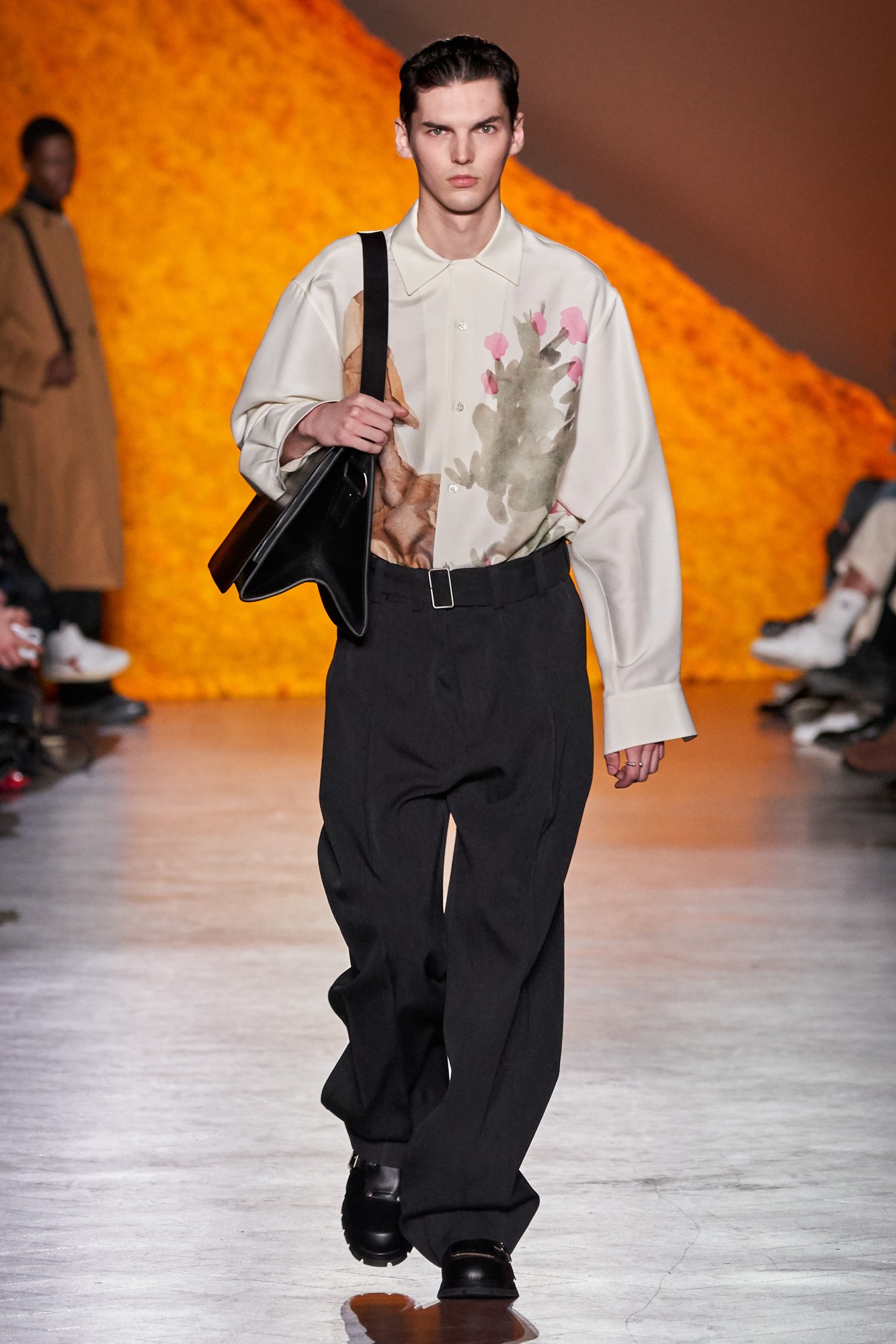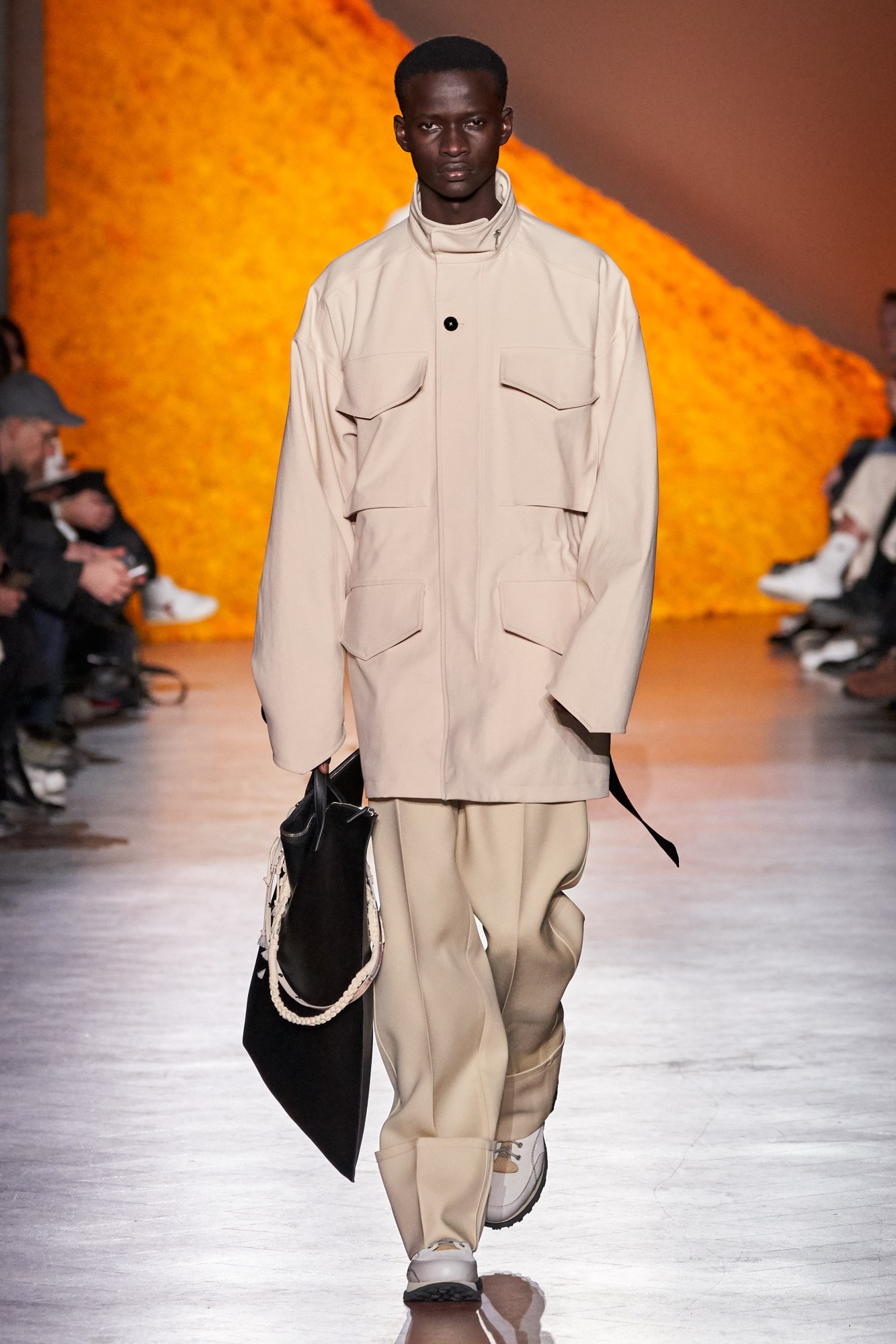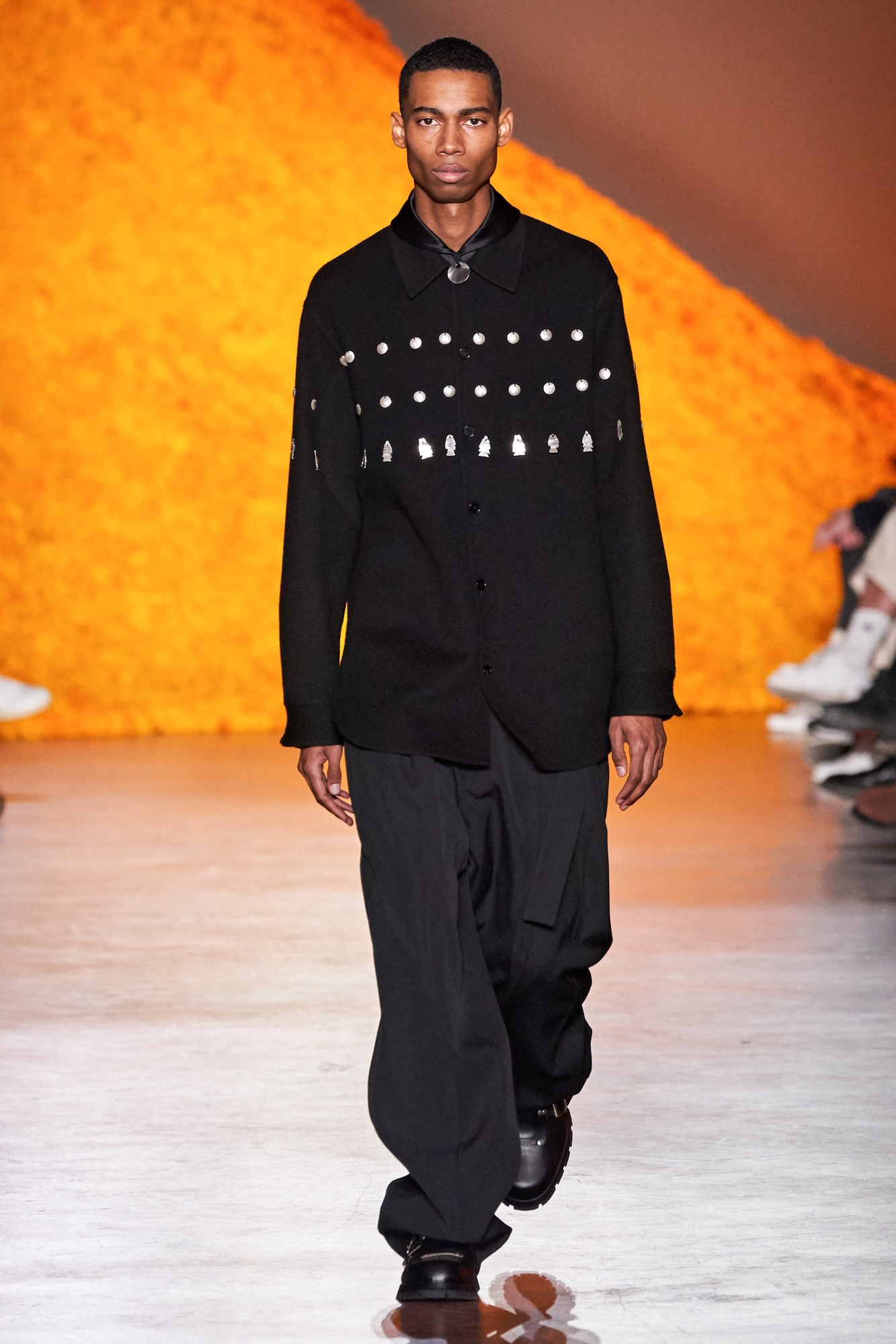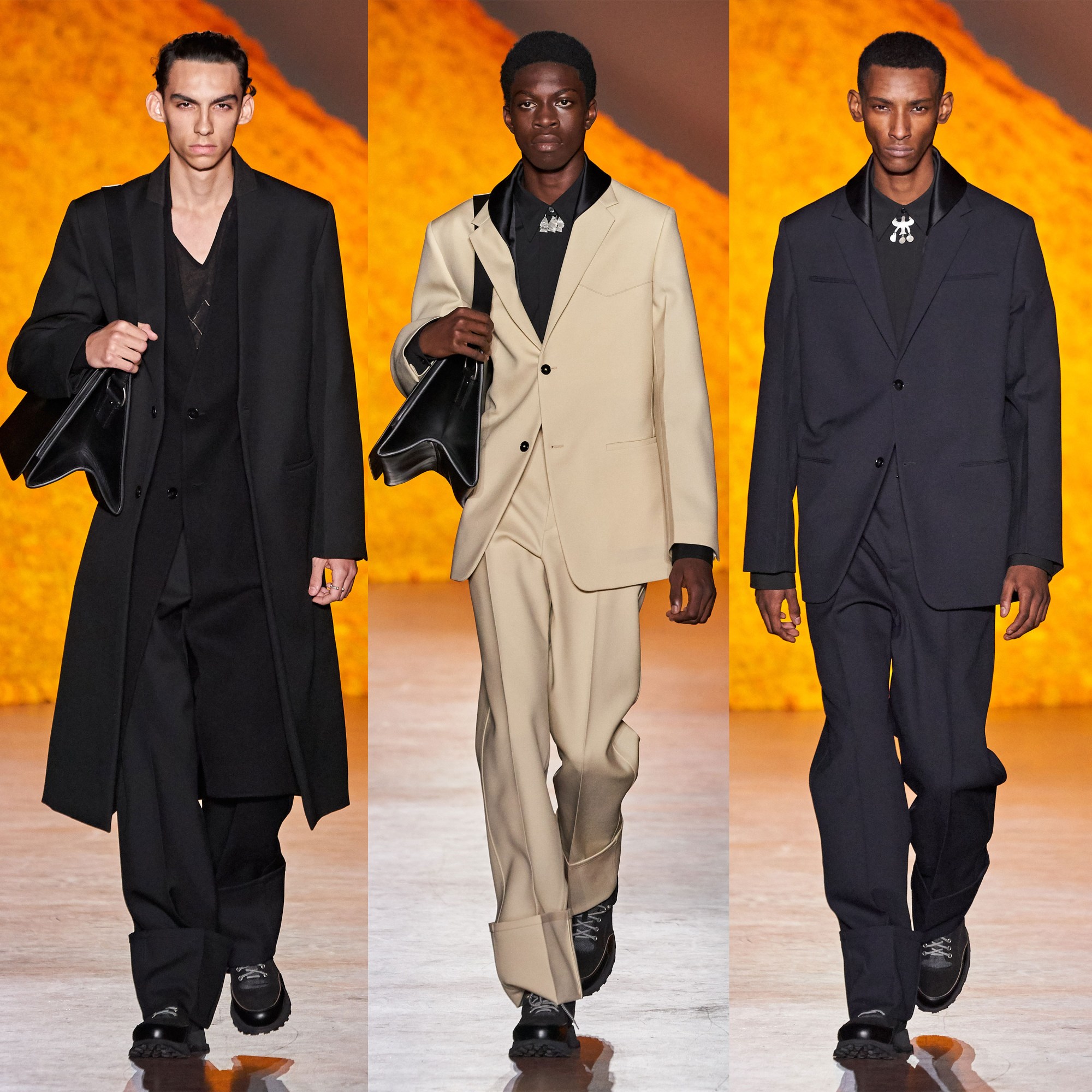If there was ever a testament to the notion that one needn’t shout to cut through the noise, it is Lucie and Luke Meier, the co-creative directors of Jil Sander. The house may have been built on Germanic minimalism, but in the hands of the wife-and-husband duo it has become a byword for elegant design imbued with the warmth of handcraft. Softly-spoken clothes, if you will, not unlike their creators.
That means all the more considering that the current fashion landscape is awash with adeafening sensory overload of opulence, blisteringly loud embellishment and a Versailles-worth of feathers-and-frou-frou. At Jil Sander, however, the intention remains the same each season: to create beautiful clothes that will last a lifetime and survive the revolution.
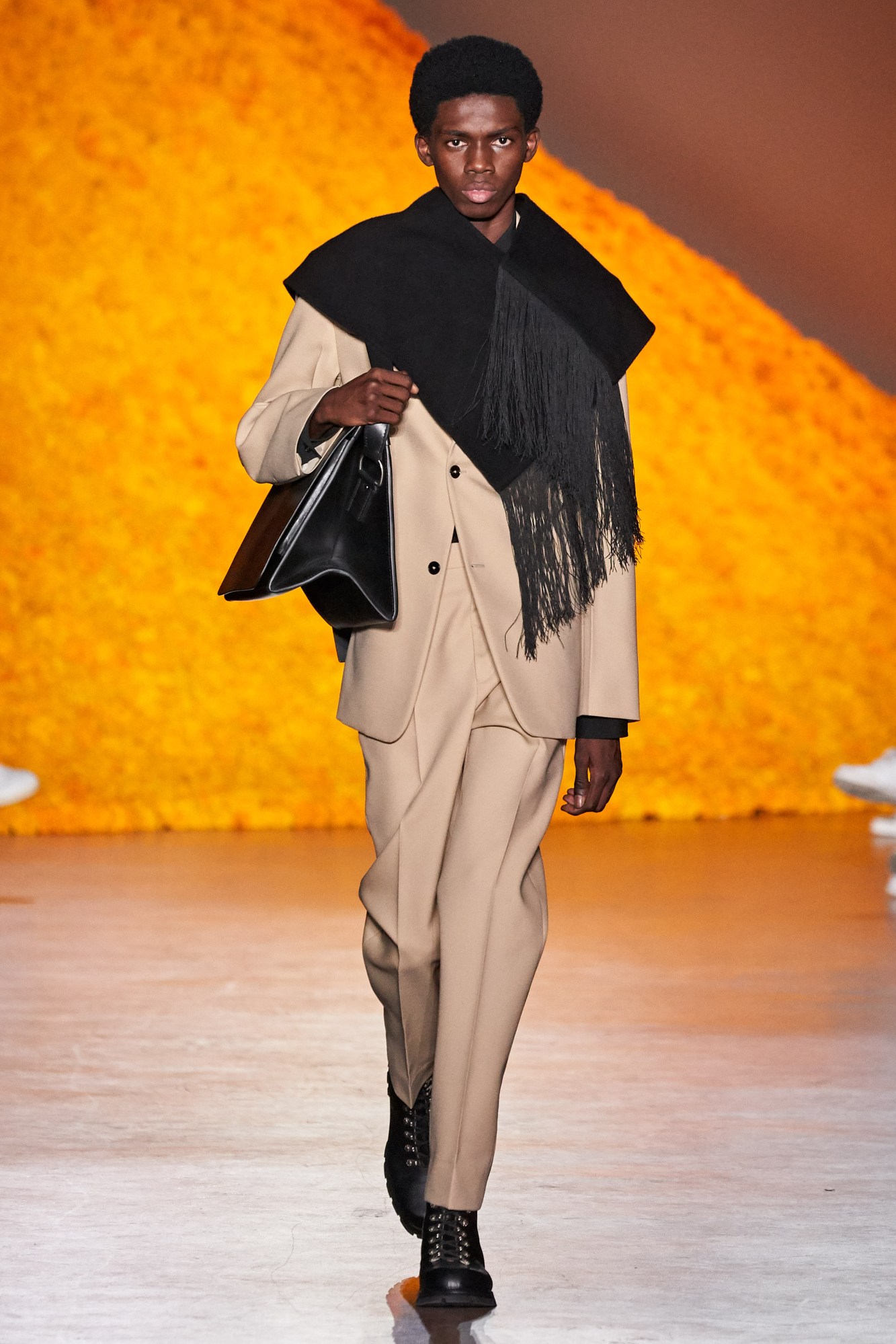
And of course, once clothes become timeless in their appeal and quality, they transcend fashion. Rightly so, given the current (soaring) climate. That makes writing about Jil Sander’s navy/beige/oxblood/black clothes especially hard because it is almost always channelling the same energy — that of crisp cotton shirting, sharp-yet-fluid tonal tailoring and beautifully classic cashmere coats. The point is that it doesn’t necessarily need to reinvent the wheel because the wheel is already spinning at breakneck speed. That’s what makes it a quietly radical approach to building a modern brand.
Even as the guest designer of Pitti Imagine in Florence, the Meier’s AW20 menswear show marked an understated homecoming for the pair. They actually met in Florence, in 2001, when they were both students at the Polimoda fashion school here and became roommates in a shared apartment. She is Swiss, he is Canadian; she eventually ventured into the world of Dior haute couture, he into the Supreme streetwear universe — it’s all very romantic.
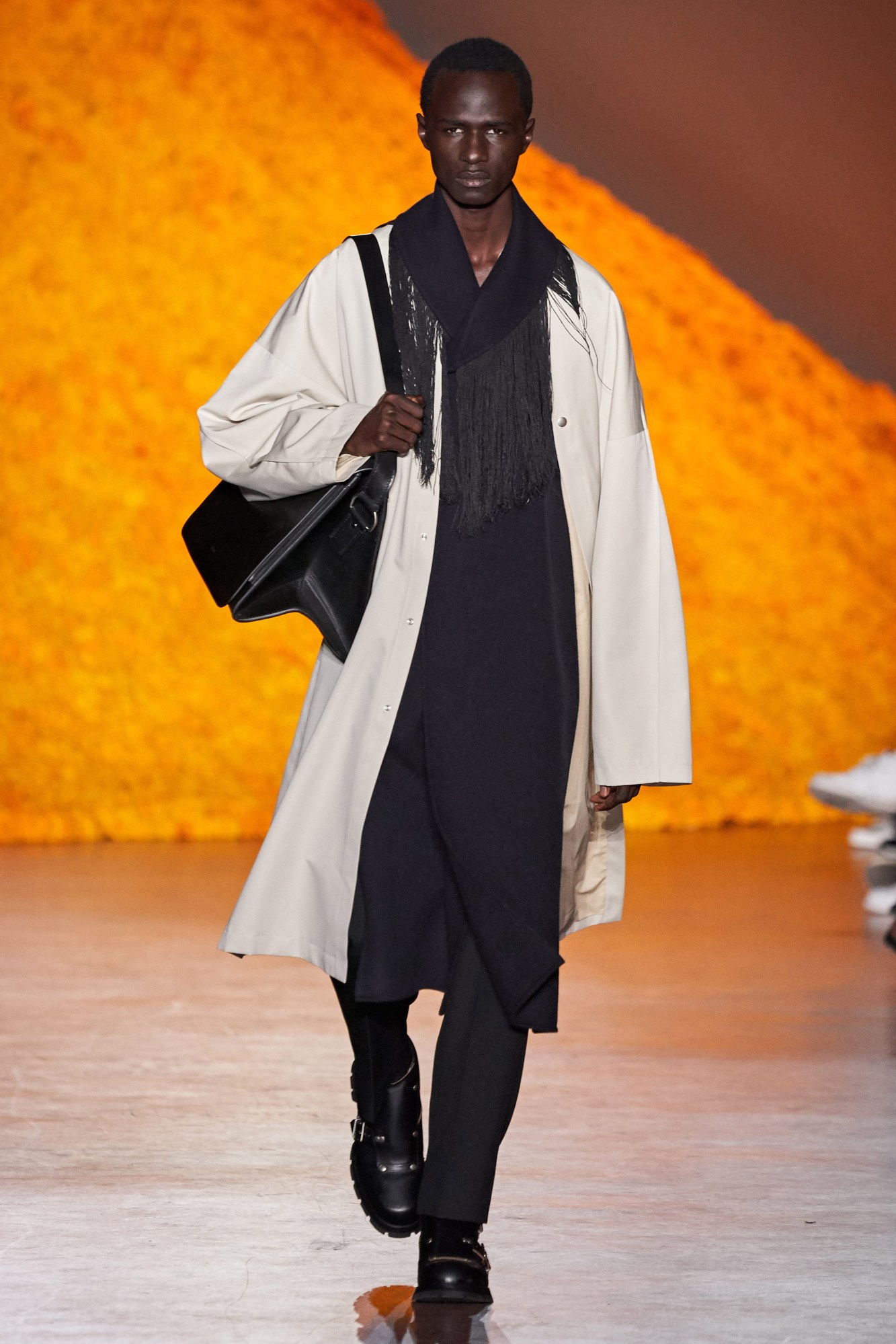
Almost 20 years later, united in both matrimony and creativity, they filled the refectory of Santa Maria Novella with mountains of marigolds, known for their healing qualities everywhere from Mexico to India, and the juddering beat of Bjork’s Hidden Place (Possible exotic reference, you ask? No, it was a nod to Santa Maria Novella, the iconic 600-year-old Florentine apothecary.)
It was the clothes, free from any logos, branding or kitsch novelties, that did the talking. “We started by thinking about Florence and what it means to us and what our connection is to Florence,” Luke explained after the show. “We really discovered making and craft here, and our education started here, so we started by looking at craft and handmade things.”
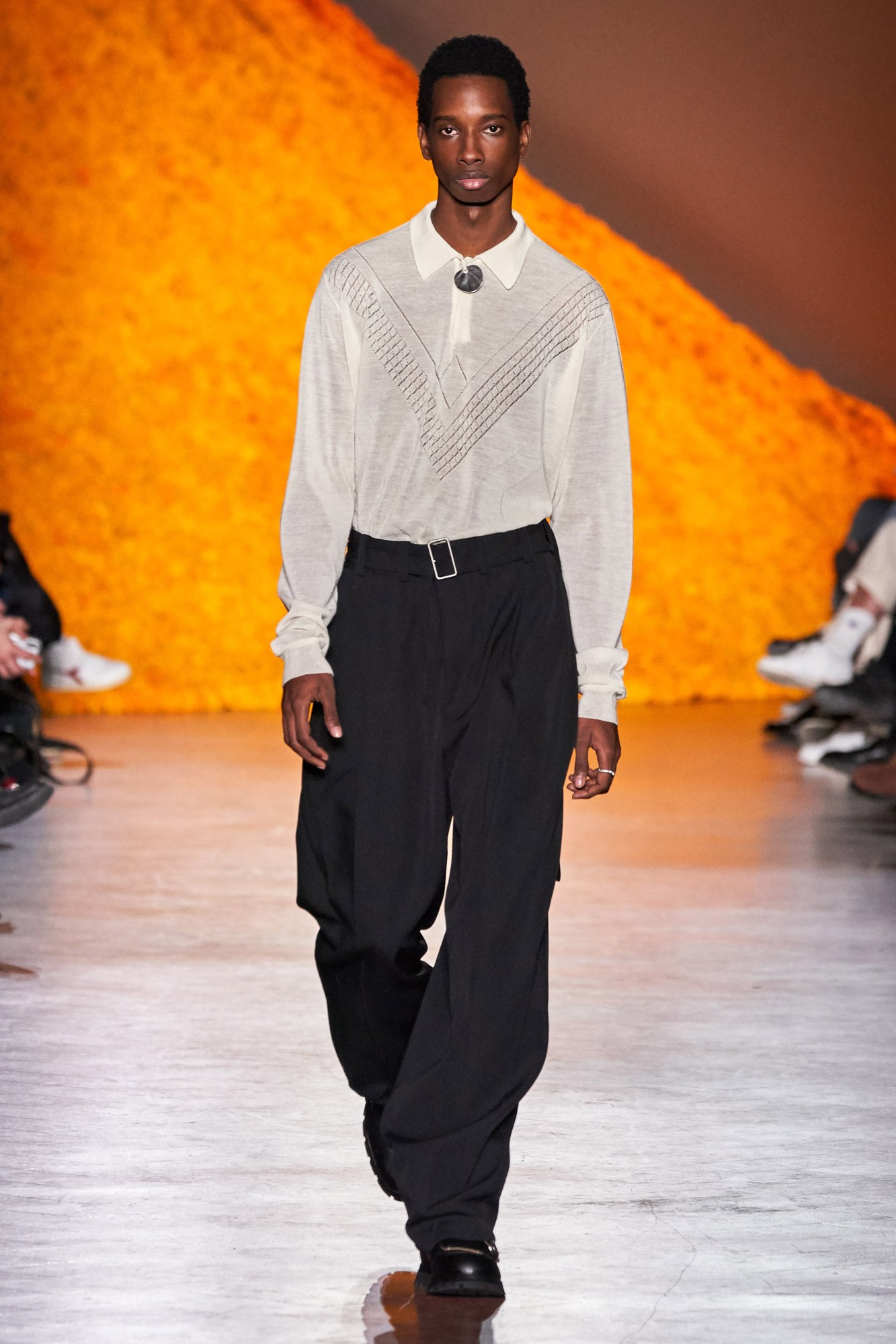
So if there was a takeaway, let it be the gestures towards the emotion of handcraft from around the world — neat rows of hand-hammered silver embellishments from the South-West of America, Japanese wools, hand-woven English tweeds, chunky Shetland wool tabards, hand-stained watercolour silks and plenty of Tuscan-crafted leathers and cashmeres. All of it was transposed through a play on proportion — big volumes in light textures; layering that somehow seemed lightweight.
How do the designers feel about their work as an antidote to the clamour of the industry? “This is what we want to do,” Lucie simply put it. “We just think about what is right for us instead of the whole scope.” Luke chipped in: “We just do what we feel and maybe that’s radical.” Radical, yes. Important, definitely.
